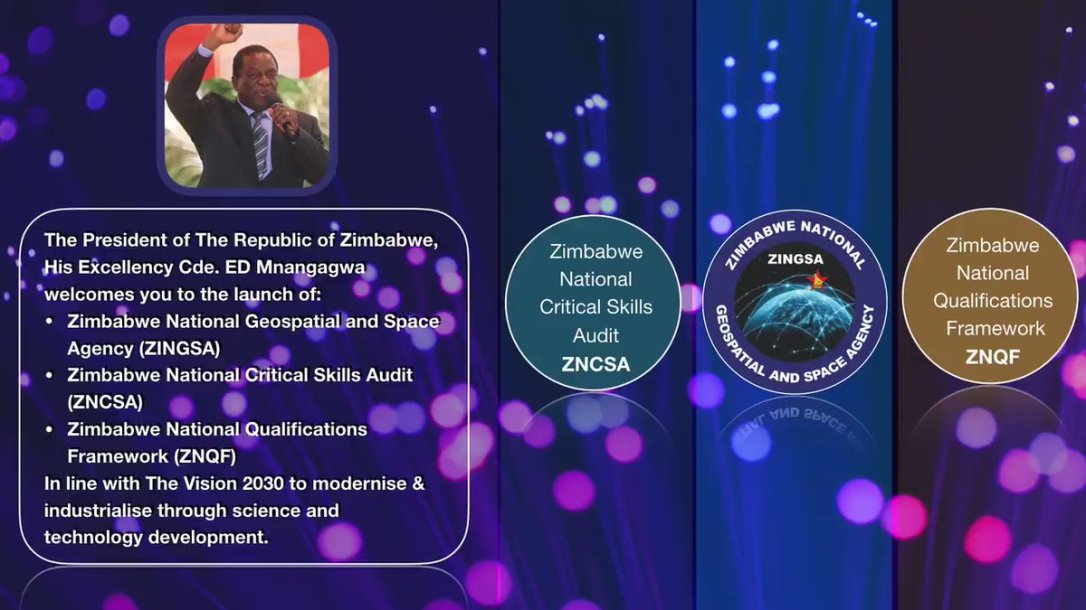
In a race for relevancy the Government of Zimbabwe triumphantly launched the Zimbabwe National Geospatial and Space Agency (ZINGSA) in line with the National Industrialisation Agenda for 2030. On paper, this initiative seeks to enhance satellite communication systems, agriculture, mining exploration and wildlife conservation amongst a plethora of well-founded benefits. This puts Zimbabwe in a league that includes 11 other countries from the African continent namely, Algeria, South Africa, Nigeria, Ethiopia, Tunisia, Libya, Sudan, Morocco, Ghana, Angola and Egypt. Since 1998, over US$3 Billion has been spent in space related projects that have purposefully launched over 28 satellites into orbit with an African agenda[1]. To this end, it can be concluded that Africa has an emerging space market with a value that cannot be overemphasized.
Through the establishment of ZINGSA, Zimbabwe has catapulted itself into a multi-billion dollar industry backed by global commercial giants. In 2016, the African Union adopted a space policy and strategy which laid out the rationale for joining the geospatial league[2].
As the new kids on the block, it is prudent that we take note of key pre-conditions that must be met before we can reach for the stars, facts only.
Pre-condition #1: Kings of Cash

Nigeria dominates Africa as the most populous nation with a population of over 190million. Not only is Nigeria densely populated, it has a vibrant economy buoyantly supported through agriculture and oil industries that contribute to the Gross Domestic Product (GDP) of US$400 billion dollars[3]. As a result, Nigeria has comfortably spent over US$500 million on satellite design and manufacturing. Amongst the top 5 economies in Africa with Geospatial and Space assets are South Africa, Angola, Egypt and Morocco, whose mixed market economy are founded on the coalescence of Capitalist and Socialist Systems[4]. The absence of a monopolistic approach within these economies, make them the kings of cash because of a highly competitive and productive business environment. All the countries that have successfully launched space programs, have had enabling economies. Zimbabwe is ranked 19th in Africa with a GDP of circa US$16 billion, making it least performing economy of all the countries in the space league.

Pre-condition #2: Knowledge is Power
The South African National Space Agency (SANSA) is ranked 30th in the world in terms of scientific production in satellite technology[5]. Amongst the reasons for this high ranking is the investment made in empowering and capacitating academic institutions, a similar investment made in Egypt by the American government during the 1970s. The South African Department of Science and Technology actively invests hundreds of millions of Rands on programmes to boost the number of knowledge workers in South Africa, with the South African National Space Agency receiving R138 million in annual budget allocations. In the field of Geospatial and Space academia, the country is a research and development destination. South Africa also happens to be one of the first countries with home-grown astronauts, with the Cape Peninsula University of Technology, Stellenbosch University and the Nelson Mandela University actively involved in the development of satellite technology; engineers focused on engineering. South Africa has very good engineers who know what they are doing, but there is lack of sizable investment from the government. There are over 14 universities in Zimbabwe, with ratio of engineers to people in the country at 1:6 500, whilst in China it is as low as 1:200[6]. Universities and research institutions are integral in producing research related to the field of space science such as astronomy and astrophysics.

Pre-condition #3: A Helping Hand
The establishment of the Egyptian Space Program within the National Authority of Remote Sensing and Space Sciences came with the dawn of the 21st Century, with the mandate of promoting the use of state of the art space technology for the development of the country. Preceding this space program was the founding of the Egyptian Academy of Scientific Research and Technology with aid from the American government. International co-operation is key in providing assistance in the development of a viable geospatial and space based program as there is no need to reinvent the wheel. In the case of Egypt’s space program, bids were received from companies based in Ukraine, United Kingdom, Russia, Korea and Italy through an international tender for the development of the first Egyptian satellite for the observation and remote sensing[7]. Just 7 years later, EgyptSat 1 was successfully launched from Kazakhstan. Japan Aerospace Exploration Agency (JAXA) was also a key partner in the launching of Kenya’s first nanosatellite in May 2018[8]. Through ZINGSA, Zimbabwe has an opportunity to exploit its geographic position and natural resources to promote economic growth, improve the quality of life of its people, and contribute to scientific knowledge. This can be achieved through fostering increased interaction and supporting work carried out by universities, research institutes and industry harnessing opportunities for co-funding and technical support.
Pre-condition #4: Digital Divide
Geospatial and space endeavours is hinged upon the quality of Information Communication Technologies (ICTs). As the world heads into the 4th industrial revolution it has become more important than ever that African countries focus on their ICT development in order to improve digitalisation. It comes as no surprise that South Africa is ranked 1st amongst the League of Nations with geospatial and space ambitions, leading the charge as Africa has seen the fastest growth rates in internet penetration, increasing by more than 20% compared to 2017. Zimbabwe well posed in the digital race with superior information infrastructure compared to Angola, Nigeria and Kenya[9], according to the 2007 Information Technology Development Index (IDI). Information systems provide the backbone for all geospatial and space bound processes, data acquisition, processing and analysis is heavily reliant on physical devices as well as protocols on access and data formats. Without a sound ICT policy to support ZINGSA, launching such an initiative will result in imminent failure. The development of a comprehensive ICT system will enable ZINGSA to interface with regional data centres in South Africa and Botswana, reducing the cost of producing new information. Collaborations are important to build the next big technology in the industry and maximize it for the sustainable development of the SADC region.

In moving forward, Zimbabwe’s Space Race has just begun and presents a quantum leap in the country’s ambitious industrialization agenda for 2030. There is an insurmountable potential in such an endeavor should it be implemented in cognisance of the pre-conditions for take-off, as areas that need capacity building. The efforts to establish an effective earth observation program are only effective if prior experiences and regional models are taken into consideration as blueprints for implementation. The widespread problems of poverty, unemployment and disease in Zimbabwe have made the priority given to ZINGSA a subject of political debate. In the most immediate moment, ZINGSA has the potential to get critical justification from members of the populace that have cast doubt over the organisation only if the information produced through the Agency is responsive and vital in addressing the wide range of perennial environmental and socio-economic problems the country currently faces. ZINGSA must harness capacities of the skilled labour force and take advantage of their inter-dependencies in establishing a robust and functional organization.
END
[1] Ismail Akwei https://face2faceafrica.com/article/tit-african-countries-satellites-space
[2] African Union: Press Release, https://au.int/en/pressreleases/19677/african-union-heads-state-and-government-adopts-african-space-policy-and
[3] http://statisticstimes.com/economy/african-countries-by-gdp.php
[4] Kareem Abdul Rasaq The Mixed Economic Systems in Africa http://www.academia.edu/28125035/The_mixed_economic_system_in_modern_Africa
[5] Africa Union: African Space Strategy, https://au.int/sites/default/files/newsevents/workingdocuments/33178-wd-african_space_strategy_-_st20445_e_original.pdf
[6] The Chronicle, www.chronicle.co.zw/critical-shortage-of-engineers-in-zim/
[7] State Space Agency of Ukraine – Egyptsat1 http://www.nkau.gov.ua/nsau/
[8] MIT Technology Review, https://www.technologyreview.com/the-download/611127/kenyas-first-satellite-is-now-in-earth-orbit/
[9] ICT Development Index http://www.itu.int/net4/ITU-D/idi/2017/index.html

